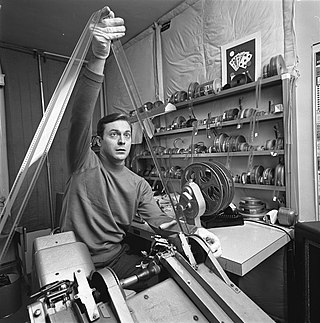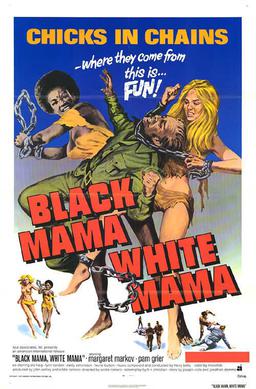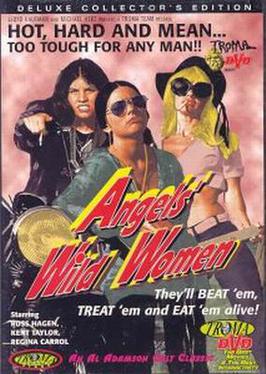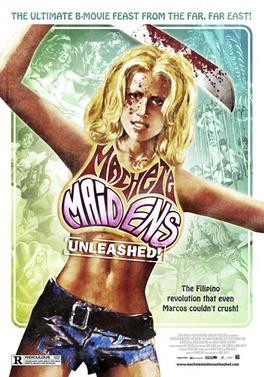
Roger William Corman is an American film director, producer, and actor. Known under various monikers such as "The Pope of Pop Cinema", "The Spiritual Godfather of the New Hollywood", and "The King of Cult", he is known as a trailblazer in the world of independent film. Many of Corman's films are low-budget cult films including some which are adapted from the tales of Edgar Allan Poe.

American International Pictures is an American motion picture production label of Metro-Goldwyn-Mayer, owned by Amazon MGM Studios. In its original operating period, AIP was an independent film production and distribution company known for producing and releasing films from 1955 until 1980, a year after its acquisition by Filmways in 1979.

Jackie Brown is a 1997 American crime film written for the screen and directed by Quentin Tarantino, based on the 1992 novel Rum Punch by Elmore Leonard. It stars Pam Grier as Jackie Brown, a flight attendant who is caught smuggling money. Samuel L. Jackson, Robert Forster, Bridget Fonda, Michael Keaton, and Robert De Niro appear in supporting roles.

Pamela Suzette Grier is an American actress and singer. Described by Quentin Tarantino as cinema's first female action star, she achieved fame for her starring roles in a string of 1970s action, blaxploitation and women in prison films for American International Pictures and New World Pictures. Her accolades include nominations for an Emmy Award, a Golden Globe Award, a Screen Actors Guild Award, a Satellite Award and a Saturn Award.

Foxy Brown is a 1974 American blaxploitation film written and directed by Jack Hill. It stars Pam Grier as the title character who takes on a gang of drug dealers who murdered her boyfriend. The film was released by American International Pictures as a double feature with Truck Turner. The film uses Afrocentric references in clothing and hair. Grier starred in six blaxploitation films for American International Pictures.

Coffy is a 1973 American blaxploitation film written and directed by Jack Hill. The story is about a black female vigilante played by Pam Grier who seeks violent revenge against a heroin dealer responsible for her sister's addiction.

Jack Hill is an American film director in the exploitation film genre. Several of Hill's later films have been characterized as feminist works.

Black Mama White Mama, also known as Women in Chains, Hot, Hard and Mean and Chained Women, is a 1973 women in prison film directed by Eddie Romero and starring Pam Grier and Margaret Markov. The film has elements of blaxploitation.
Stephanie Rothman is an American film director, producer, and screenwriter, known for her low-budget independent exploitation films made in the 1960s and 1970s, especially The Student Nurses (1970) and Terminal Island (1974).
The outlaw biker film is a film genre that portrays its characters as motorcycle riding rebels. The characters are usually members of an outlaw motorcycle club.

Angels' Wild Women is a 1972 biker film written and directed by cult director Al Adamson. Preceded by Satan's Sadists (1969) and Hell's Bloody Devils (1970), it is the last in a trio of (unrelated) motorcycle gang films directed by Adamson for Independent-International Pictures Corp., a company he co-founded with Sam Sherman. The plot centers on a group of tough biker babes who leave their cycle gang boyfriends to go on a violent rampage. When a cult leader kills one of the girls, the others go out for revenge.

It's a Bikini World is a 1967 American musical comedy film starring Tommy Kirk, Deborah Walley and Bobby Pickett. The film features cameos by the music groups the Gentrys, the Animals, Pat & Lolly Vegas, the Castaways and R&B girl group the Toys. Featuring a pro-feminist plotline, it is the only film in the beach party genre to be directed by a woman.
Roberta Collins was a film and television actress who was known for her attractive physique, blonde, curly hair, and Marilyn Monroe appearance. She starred in many exploitation films, including the prostitute Clara in Tobe Hooper's Eaten Alive and Matilda the Hun in the science-fiction film Death Race 2000.

The Big Bird Cage is a 1972 American exploitation film of the "women in prison" subgenre. It serves as a non-sequel follow-up to the 1971 film The Big Doll House. The film was written and directed by Jack Hill, and stars Pam Grier, Sid Haig, Anitra Ford, and Carol Speed.

Christiane Schmidtmer was a German actress, fashion model, nude model, and memoirist.

Blaxploitation is an ethnic subgenre of the exploitation film that emerged in the United States during the early 1970s. The term, a portmanteau of the words "black" and "exploitation", was coined in August 1972 by Junius Griffin, the president of the Beverly Hills–Hollywood NAACP branch. He claimed the genre was "proliferating offenses" to the black community in its perpetuation of stereotypes often involved in crime. The genre does rank among the first after the race films in the 1940s and 1960s in which black characters and communities are the protagonists and subjects of film and television, rather than sidekicks supportive characters, antagonists or victims of brutality. The genre's inception coincides with the rethinking of race relations in the 1970s.

The Young Nurses is a 1973 film directed by Clint Kimbrough. It was the fourth in the popular "nurses" cycle for New World Pictures, starting with The Student Nurses (1970).

The Woman Hunt is a 1972 film directed by Eddie Romero and starring John Ashley, Pat Woodell, and Sid Haig.

The Twilight People is a 1972 Filipino-American horror film directed by Eddie Romero. It was produced by Romero and John Ashley, and written by Romero and Jerome Small. It stars Ashley and features, in an early film appearance, Pam Grier in a supporting role.

Machete Maidens Unleashed! is a 2010 Australian documentary film directed by Mark Hartley.

















